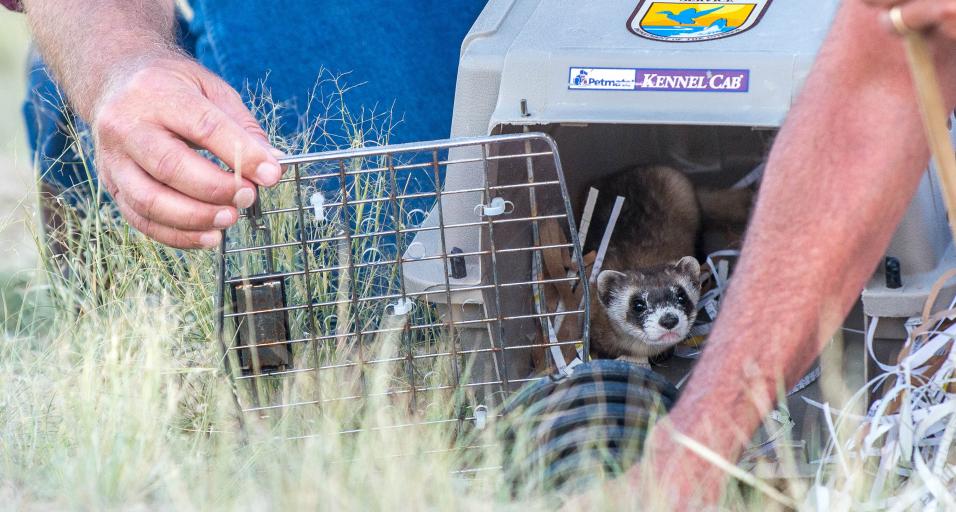Today, one of North America’s most endangered mammals, the black-footed ferret, took another step towards recovery thanks to a historic reintroduction back to the ranches where the species was rediscovered in 1981 after having been believed to be extinct. The Wyoming Game and Fish Department, in partnership with the U.S. Fish and Wildlife Service and the owners of two ranches, released 35 black-footed ferrets. The ferrets were released on the Lazy BV and Pitchfork Ranches, outside Meeteetse, Wyoming.
Beginning in 1986, the Wyoming Game and Fish Department and U.S. Fish and Wildlife Service founded a successful captive breeding program for black-footed ferrets. Captive breeding continues even today and captive bred and raised ferrets have been released throughout western North America.
“This is a historic moment for the recovery of this species. It is an honor for the men and women who serve the public and wildlife in Wyoming to be a part of this effort. This is a biologically sound and historical place to host a reintroduction and we thank the ranch owners for their commitment to recovery of black-footed ferrets. The decades of hard work from Game and Fish and our numerous partners show in these recovery efforts,” said Scott Talbott, director of Game and Fish.
“Bringing the black-footed ferret home to Meeteetse is an extraordinary achievement, which is a source of pride not only for the citizens of Wyoming, but for conservationists everywhere. Countless partners have worked together for decades to ensure the survival of this remarkable species, and their diligent efforts are just as notable as the ferret's return. Today is a special day for those partners, for all of us at the U.S. Fish and Wildlife Service, and for anyone who values having wild creatures on the landscape where they belong,” said Dan Ashe, director of the U.S. Fish and Wildlife Service.
The release of black-footed ferrets back onto private land is possible due to the 10 (j) rule that creates special provisions to give landowners protection if a ferret is killed during legal activities. Last year, a statewide rule was put in place to give landowners assurance they will be able to manage their properties without the concern they might break the law by inadvertently harming a ferret. Implementation of the 10(j) rule ensures the concerns of private landowners and landowners adjacent to reintroduction areas are addressed comprehensively.
Black-footed ferrets almost exclusively eat prairie dogs and rely on prairie dog burrows for shelter, safety, and a place to raise young. Each ferret requires 50-100 acres of prairie dog colony to survive.
The national Black-footed Ferret Recovery Implementation Team has released ferrets at 24 sites across the continent. Current numbers in the wild are encouraging, but more reintroduction sites are needed to fully recover the species so that it no longer requires federal protection.



